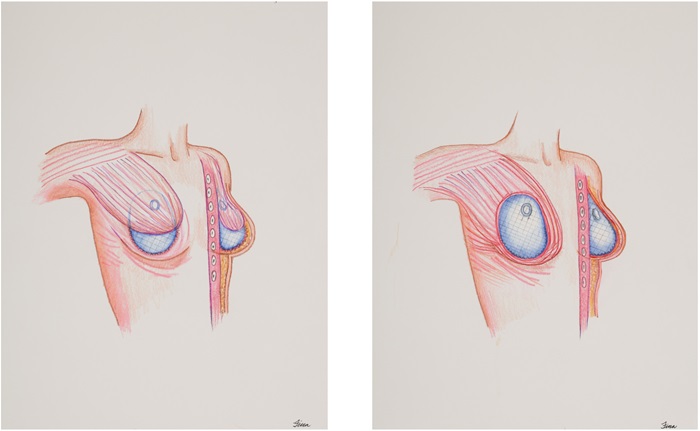Implant-Based Reconstruction

Tissue Expander and Exchange to Permanent Implant (two stages)
At the time of your mastectomy, the plastic surgeon will place a tissue expander into the breast pocket. The tissue expander allows the plastic surgeon to safely stretch the skin to accommodate an implant. Tissue expansion requires regular office visits to inject saline into the tissue expander. The amount of fluid that is injected each time is dependent on the tightness of the skin. Tissue expansion typically takes 1-3 months, but may be delayed to accommodate for other cancer treatments such as radiation therapy. Once the breast pocket has reached a desired size, the expander is left in place for at least 2-3 months more to allow your skin to get used to the shape. Surgery is scheduled to exchange the tissue expander for a permanent implant. Other adjunct procedures can be performed during the second stage, such as autologous fat grafting to the breast.
Direct to Permanent Implant (single stage)
Some women are eligible for placement of permanent implants at the time of the mastectomy. There are several factors that will influence your eligibility for a direct to implant reconstruction such as the health and thickness of the skin flaps after the mastectomy is performed, current breast shape and size, as well as desired breast size.
Acellular Dermal Matrix (ADM)
ADM products are skin substitutes derived from humans, cow, or pig skin, and have been processed to remove all cells and sterilized. The product is a mesh-like framework comprised of mostly collagen. All dermal matrices are FDA approved. Brand names for this product include AlloDerm, DermACELL, and SimpliDerm. ADM is used in a majority of patients undergoing implant-based reconstruction as it provides additional soft tissue coverage over the implant and improved cosmetic outcomes.